The Healing Beauty of Photographer Derek Slagle’s Science of Conservation
By Elizabeth Snell
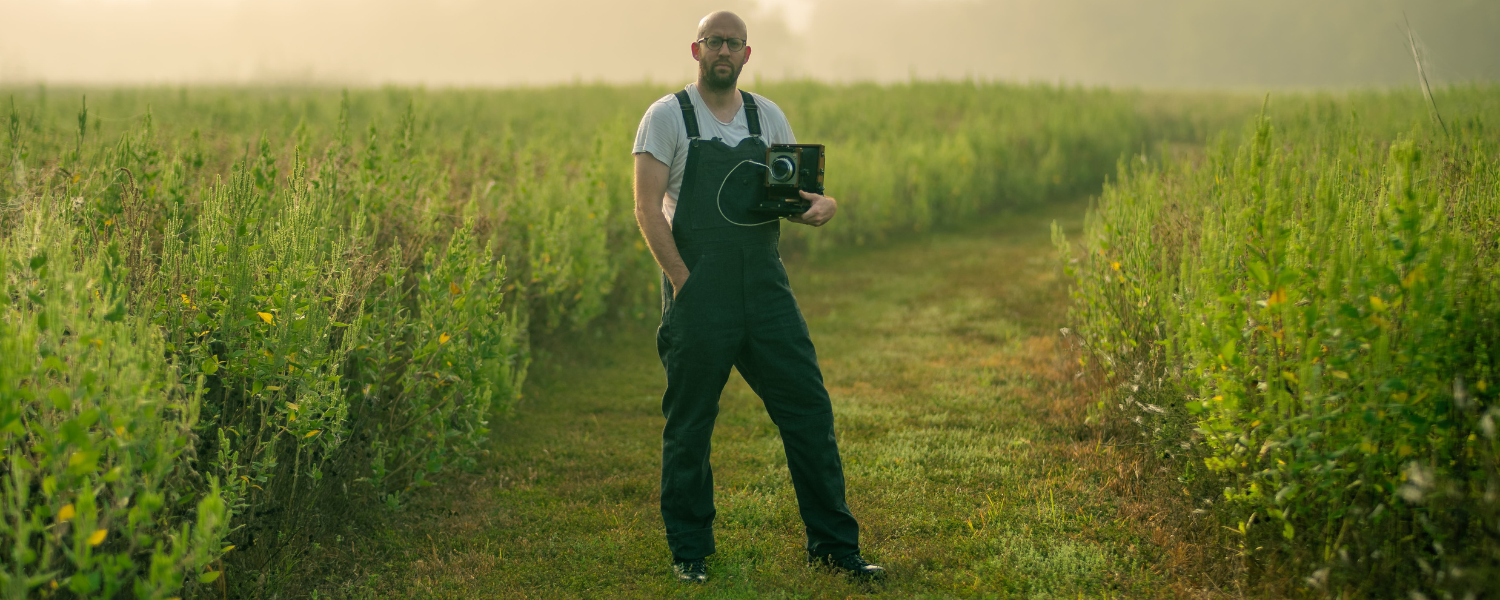
Shooting on large format film, similar to Dorothea Lange and Ansel Adams, Derek Slagle can often be found trudging through forests and countrysides on feral hog hunts, with beekeepers, conservationists, farmers, and scientists.
His work gives the public an entry to conservation through photography—creating a more accessible narrative for the public.
Meet Dr. Slagle, an Arkansas-based, Tennessee native who wears many different hats. As a professor and higher education administrator, his areas of expertise include nonprofit management, public administration, political science, and more. He’s a state appointee for service and volunteerism and a Fulbright specialist.
And yet, beside all of these responsibilities, you’ll find a photographer.
“I don’t know how to relax,” he says with a smile.
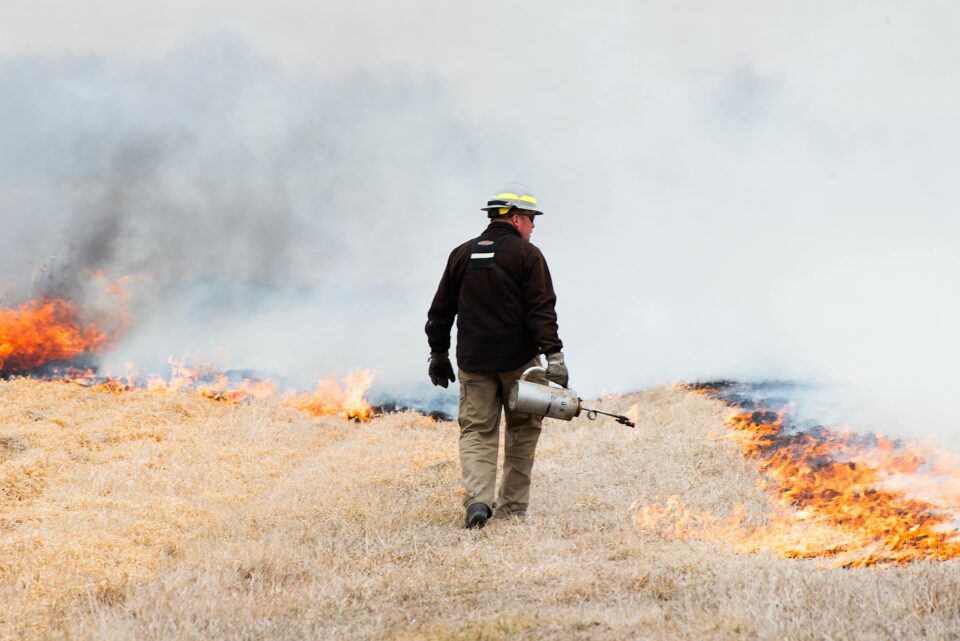
A prescribed burn in the Flint Hills of Kansas in Renaming the American Landscape series. Photography by Derek Slagle.
Derek’s work as conservation photographer began in 2016 in the Flint Hills of Kansas. He documented prescribed burns (a controlled fire) and the preservation of natural prairie landscape.
From there, he started building social science photography projects with nonprofits and public agencies around the theme of conservation, and he hasn’t stopped.
Derek’s photography and public policy background has led him to work with state agencies’ land management groups including Arkansas Game and Fish Commission, Arkansas Master Naturalists, The Nature Conservancy, and many more. Through years of creative work and academic publications, he has become ever more aware of a gap in illustrating important conservation efforts to the public.
“Collecting and analyzing scientific data is valuable, but it’s largely technical. It often excludes the general public from the discussion about what is important and what is being done,” he says.
And that’s where his photography comes in. In bridging the gap between numbers and nature, Derek strives to create emotional, visual impact through his photography that compels action.
“It’s such fun work and Arkansas being coined ‘The Natural State,’ it’s the perfect place to do it.”
He explains that it’s tough to finish a project especially when it is long term, and layers continually reveal themselves. His work is the kind of undertaking that can last a lifetime.
Catalyze helps make long-term projects more feasible.
Because the Catalyze grant program from Mid-America Arts Alliance (M-AAA) does not have to have a defined project, it opens doors for artists to use the funds how they need at the time. As projects evolve, and opportunities arise, this practice-based grant gives artists the ability to evolve as well, especially when projects are ongoing and don’t have end dates.
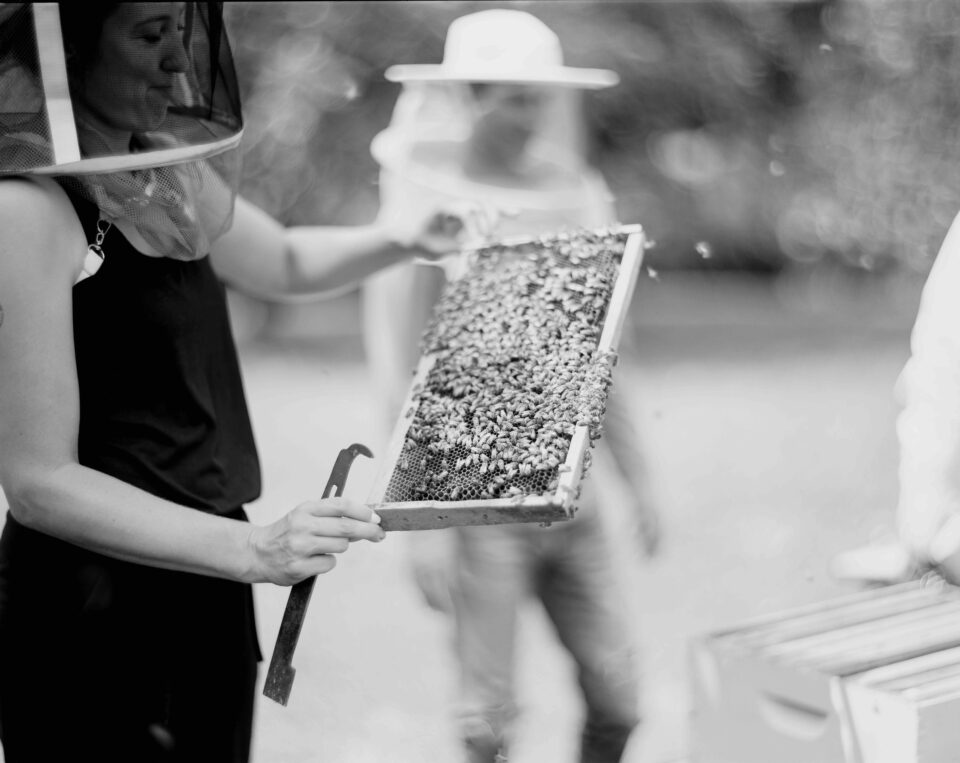
A beekeeper in the Science of Conservation photography series. Photography by Derek Slagle.
“M-AAA’s practice-based funding really helped shape this work,” Derek says. It gave me confidence to say, ‘Yes, this is worthy. This is worth pursuing.’ It opened doors in the community.”
Derek says the community collaborations have taken the work to the next place. When he reaches out to organizations and communities, he asks them, “What do I need to photograph?” He tries to be artistic and make photos that are as fine art as possible, but it’s the community that guides the work.
“Approaching people is easier now. I have funding that helps cover this work. It’s easier to get the ball rolling and get participants involved. Arkansas is largely a rural state and collaborations are often word of mouth. Having the Catalyze grant helps spread the word about the photographic work and gives the project legitimacy.”
Conservation Communities: Exercises in Creativity
In his latest photography series, Science of Conservation, the work is focused on the intersection of the environment and people. “Given the impacts of global climate change this work has felt more and more important. It focuses on collective efforts responding to environmental shifts.”
“There are so many diverse practices used for preservation and sustainability. In the same plot of land, some people will be focused on the local woodpecker population, some focused on native grasses, while others are managing invasive animal species. Diversity of emphasis is a focus for me. Different people connect to different parts of the work and often engage with the photos in very different ways.”
Focus on process and practices has come from his academic training in public administration. He’s especially attuned to the need for collective action and community to solve environmental problems.
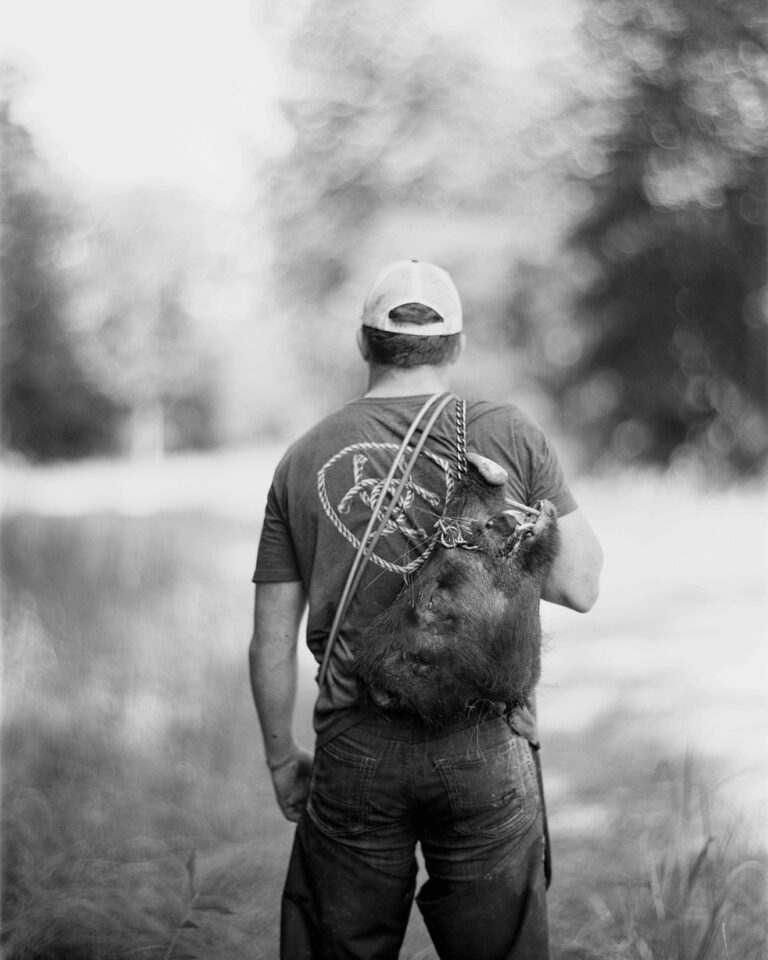
A feral hog hunter in the Science of Conservation photography series. Photography by Derek Slagle.
“When we talk about climate change, it is often framed as a global issue,” he says. “But, the work is from communities with hyperlocal, niche expertise.”
With many of the conserved lands, people study different living things interacting with the site. For example, he’s collaborating with Ranchlands in Colorado, which uses a natural approach with moving the herd and revitalization of the grassland. On the same site, he documented bird migration and the banding station for the Bird Conservancy of the Rockies.
He photographed the University of Arkansas Division of Agriculture Research and Extension Discovery Farms Fruit Station in Crossville, Arkansas, and their selective breeding practices. How can we breed raspberries for a longer season? Yay, more raspberries please. Can we make pecans that are famine resistant? They try different approaches to solving these problems.
Beekeepers. Local gardeners. Farmers. State and National parks. Preserved landscapes. Derek Slagle has been there.
He’s also worked with the Arkansas Natural Heritage Commission, which focuses on science-based conservation to protect the state of Arkansas’ biological diversity.
On the opposite side of conservation is eradication, which Derek has photographed, too. Specifically in Arkansas: there is the feral hog eradication task force which addresses the invasive feral hog population in all 75 counties. He conducted some of the program evaluation with the UA Division of Agriculture through UA Little Rock and, as part of his creative practice, he photographed feral swine hunters involved in those efforts. The hogs do a lot of environmental and economic damage, and it has become more problematic with climate change.
“As soon as I feel like I know where the project is going, it takes a new approach and includes a different institutional partner,” he says. And the Catalyze grant program provides him with that creative freedom to follow where inspiration leads.
A Photographer of American Life
The historical practice of documenting American life was done on these old film cameras. When he shows up to a photography shoot with his 1940’s Speed Graphic press camera and Aero Ektar lens (commonly used for aerial surveillance during World War II), “There is a different atmosphere,” he says. “The resulting photograph has a look that can’t be replicated.”
Every shutter click is $4-5 and Derek self develops and scans all of the photographs. His conservation photo shoots can take days or weeks and Derek will walk away with only a few pictures. “The price and time to create a photograph makes the resulting photographs more precious and meaningful,” he says. “The process is more intentional than if it were shot with a digital camera.”
He says that now there’s so much distrust in photography with artificial intelligence and digital manipulation. When he explains to viewers that his photographs were done on film, he says he gains more trust in the image.
He also stands out . . . in a good way. Derek says people say, “ok, he’s a photographer” when they see him walking around with the old, analog film camera and lens. It’s large and cumbersome.
“When out photographing on location, I often question this camera,” he says.
“But when the film develops, it is magic every time.”
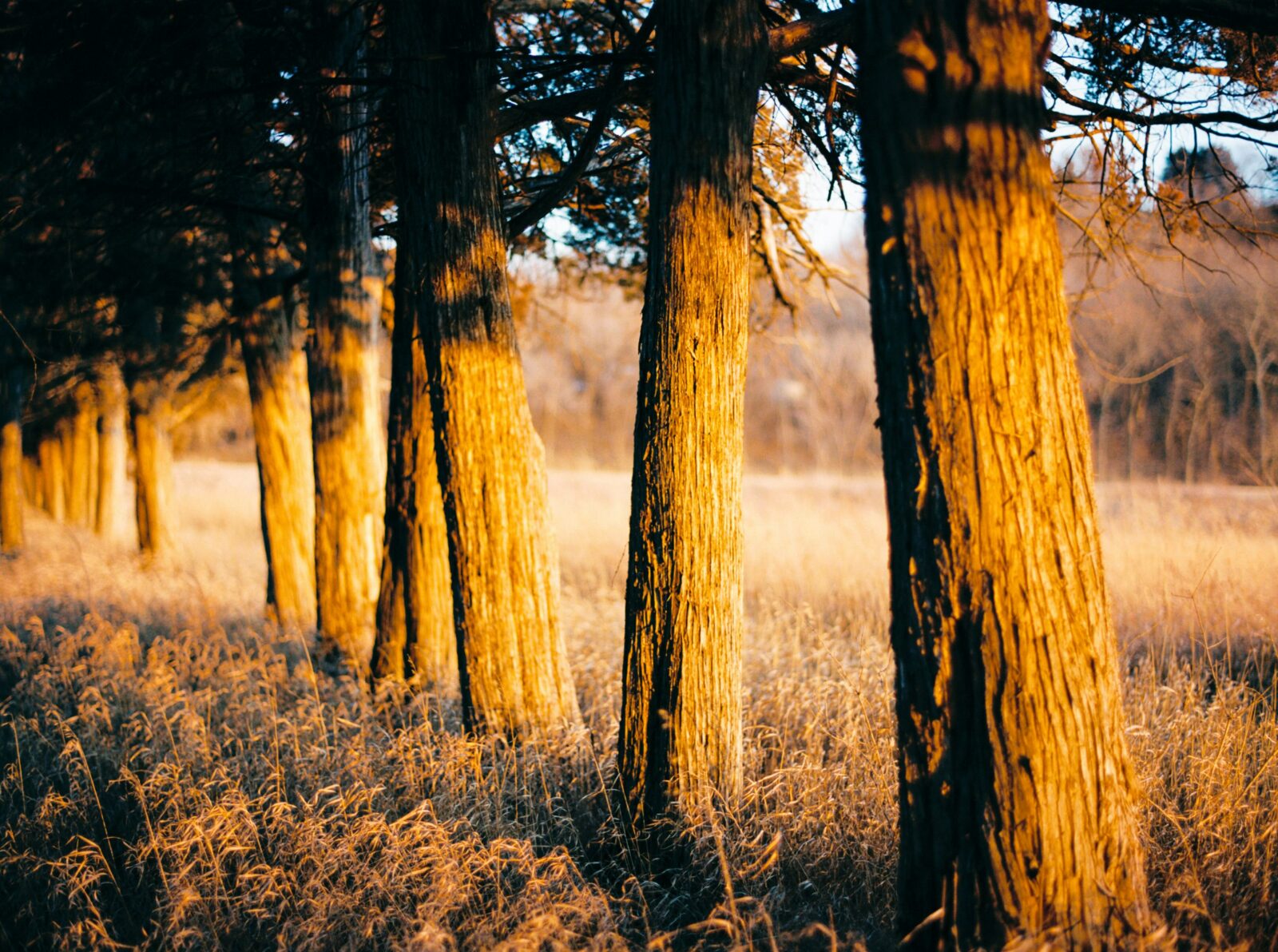
Renaming the American Landscape photography series. Photography by Derek Slagle.
See Derek’s solo exhibition, Science of Conservation, at University of Arkansas at Little Rock Windgate School of Art + Design in Little Rock, Arkansas in September 2024. See their event calendar for more information.
Learn more about Derek Slagle, PhD.
Learn more about M-AAA’s Catalyze.
All photography copyright Derek Slagle and used with permission of the artist.

